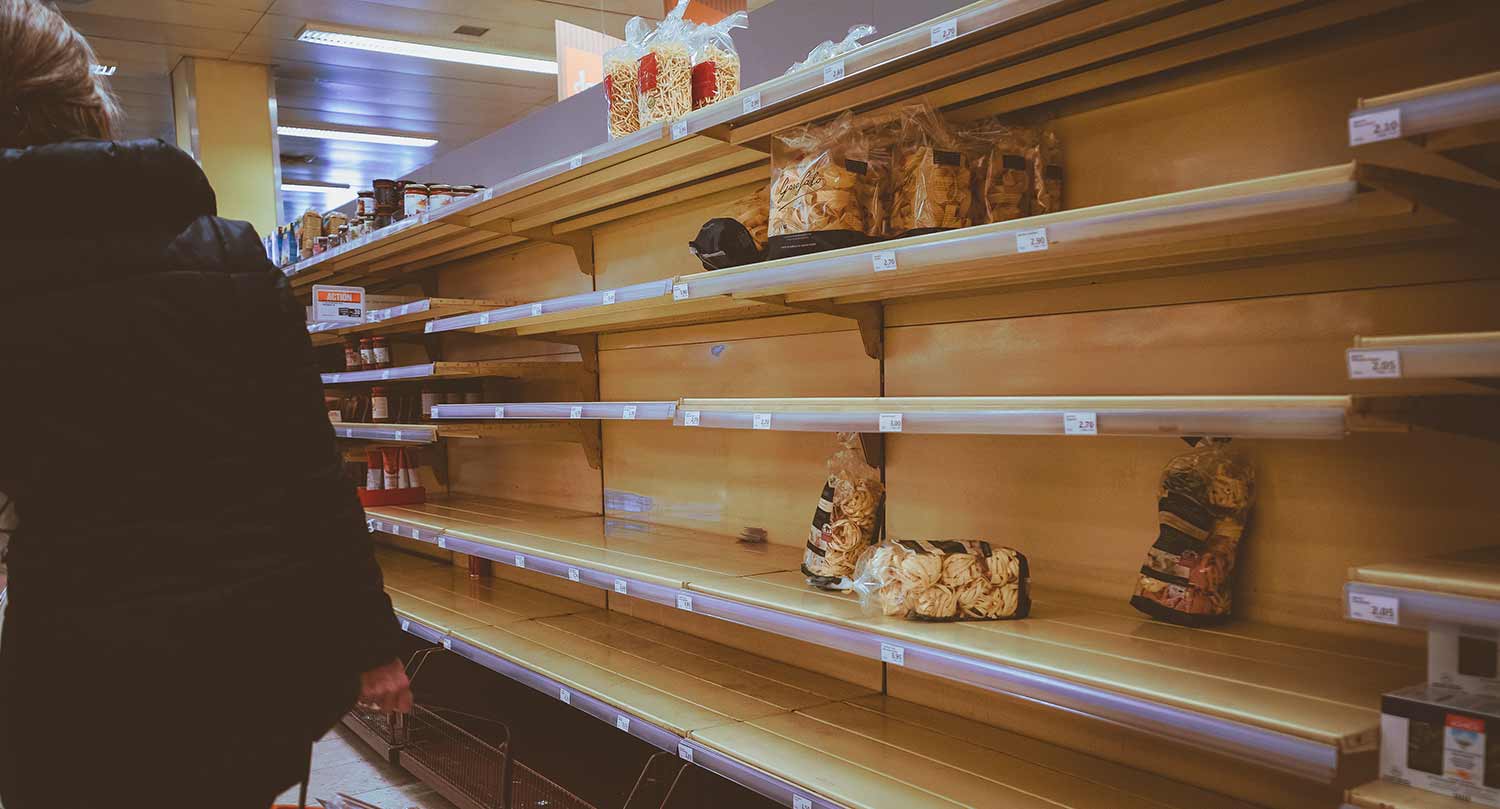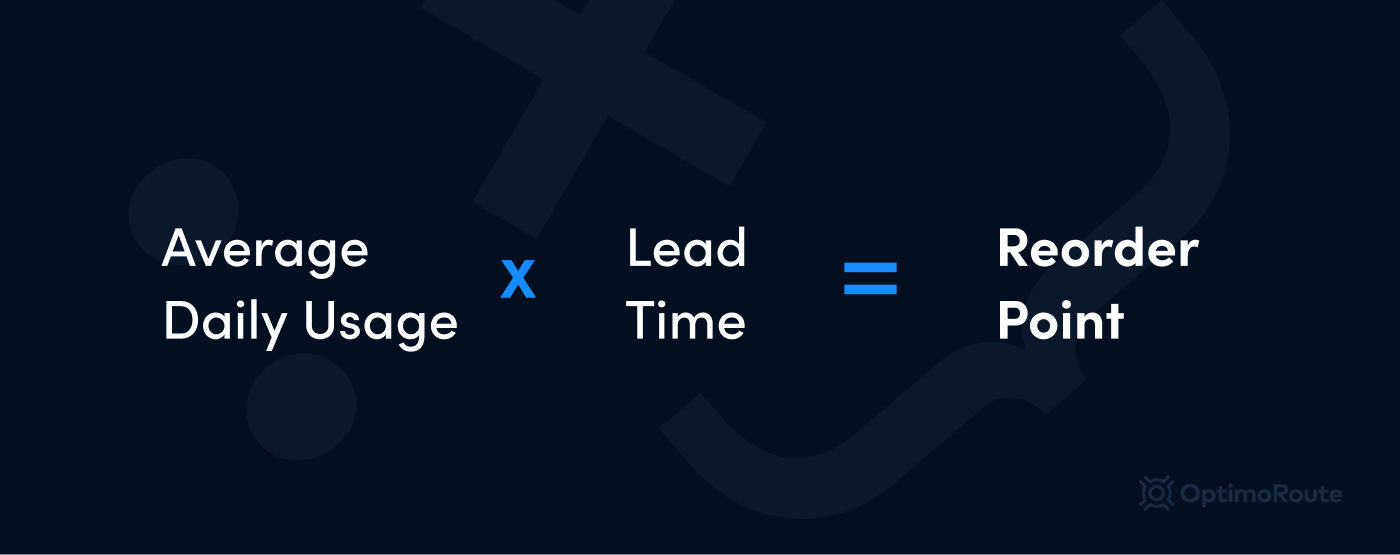Understand Reorder Point: Use Our Calculator to Save Money

If your business has a mix of empty shelves for some products while others are stacked to the ceiling, you might be struggling with the reorder point for your merchandise.
Correctly calculating your reorder point can mean the difference between profit and loss, especially if your business is in a low-margin industry like grocery, home furnishing, or even alcohol sales. Getting your reorder level right will prevent stockouts and save you money by eliminating unnecessary carrying costs and products that sit in stockrooms and expire.
We’ll show you how to calculate the reorder point for all your merchandise so the amount of inventory will match customer demand. Calculating your reorder point will help you maintain consistent sales and avoid unnecessary expenses from reordering additional inventory before you need it.
Topics covered in this article include:
What Is Reorder Point
Why Is Reorder Point Important
How Do You Calculate Reorder Point
Use Software to Improve Efficiency and Save Money
Decrease Delivery Expenses With OptimoRoute
See How OptimoRoute Can Save Your Business Money
What Is Reorder Point?
Reorder point is the level of stock in your inventory that triggers you to reorder that product. It’s the minimum amount of stock for an item a business has before replenishment is needed to meet customer demands.
When inventory levels reach that point, either your WMS automatically places an order, or your managers do so manually.
For instance, if you owned a pharmacy, and your reorder point for a bottle of aspirin was 10, you would need to reorder aspirin when there were 10 bottles left in stock.
Why Is Reorder Point Important?
Reorder points can help you transform the way you handle inventory throughout your supply chain. Having ample stock on hand is important to both keep customers happy and reduce profit loss.
It prevents a product from running out
Tracking your reorder point prevents a product from running out before customers can purchase it. If you don’t reorder products at the right time, customers will come to your store ready to make a purchase, only to find an empty shelf.

If you know your reorder point for aspirin is 10, but you wait until you have five bottles left to contact your supplier, you won’t have the needed level of inventory and will end up with a stockout, or out-of-stock event. Maybe the customer will purchase an alternative product if you have it, but you might lose their business to a competitor.
Consumers aren’t patient: They’ll cancel their orders and go elsewhere
According to Statista, 35% of consumers will cancel a purchase order because the delivery time is too long.
So, if you’ve run out of stock and your customers have to wait an extra week or two, chances are they’ll cancel and go elsewhere.
And if your products are consistently out of stock, you might lose customers’ business permanently. One of the top reasons businesses lose customers is that they failed to meet expectations, and a store that lacks inventory doesn’t meet expectations.
It avoids profit loss
Another reason reorder point is important is that it helps avoid the profit loss that comes from placing orders too early, causing stock to pile up.
Too much product that sits in a warehouse longer than planned causes expenses to add up because you have to factor in the cost of the space, insurance, tax and deterioration of inventory. Warehousing a lot of merchandise over long periods can quickly cut into profit margins. If the product has a short shelf life – like food – and it goes bad or expires before it’s purchased, then you’ve paid money to a supplier and won’t make it back.
How Do You Calculate Reorder Point?

To calculate reorder point, you multiply your average daily usage by lead time.
Let’s use the reorder point formula to calculate reorder point from the perspective of a grocery store that sells orange juice.
Average Daily Usage
Before the store managers can determine their reorder point, they need to figure out how many bottles of orange juice they sell every day. They do this by adding up their daily orders over a particular period and dividing the total by the number of days in the period.
If they added up orange juice sales over 30 days and had 300 sales, their average daily usage would be 10.
Lead Time
Lead time refers to the amount of time it takes for the orange juice to arrive at the store after it’s purchased. In this case, it takes three days for orange juice to get from the supplier to the store after the order is placed. This means the average lead time is three.
Reorder Point
Now that average daily use and lead time have been determined, it’s time to calculate the reorder point for orange juice, which would be 10 x 3.
This means when the grocery store has 30 bottles of orange juice in stock, they’ll need to place a new order to make sure they have the right order quantity to meet demand.
Reorder point is more complicated than it seems
Calculating reorder point might seem simple when looking at one product, but it gets increasingly complex the more inventory you manage. Potentially, every product you sell could have a different lead time and average daily usage.
Adding to the complexity is seasonality, because some products will have increased or decreased average daily sales based on the time of year. The average demand for orange juice often grows during flu season, so you’ll need to order a larger quantity to have the correct inventory levels. If you aren’t accounting for that in your average daily usage, then there’s a potential for stockouts.
Additionally, if more businesses are ordering orange juice, the added demand on the supply chain could delay delivery time. To prevent stockouts in these situations, businesses should have safety stock on hand, which could then alter the ROP formula.
Example of a Reorder Point Calculation in Real Life (and Its Benefits)
Dawn Rosch, a previous Veterinary Economics Practice Manager of the Year, implemented reorder points to lower excess stock in a veterinary clinic. Because the supplies included vital medicines, they calculated the reorder point with a hypothetical maximum lead time of 30 days (even though most of the time it was within 24-hours).
The move ensured that none of the essential supplies would ever be out of stock while still significantly reducing their inventory and freeing up capital. Lowering the order quantity and increasing frequency was a great business move. The adjustment led to a reduction from $125,000 to $90,000 in held medicine inventory at any given time.
That gave the veterinary clinic an extra $35,000 in available capital to invest in marketing, new staff, renovations, and more. Every option is more productive for the business than holding unnecessary stock.
Use Software to Improve Efficiency and Save Money
While some business owners calculate reorder point manually or use Excel formulas, inventory management software is a better solution. With different amounts of daily usage, lead times, and product seasonality, it will be difficult to manually manage your inventory and ensure you have enough stock.
An inventory management system will help your business for the following reasons:
- It’s more reliable. It removes the potential for human error to impact calculations and cause you to order additional inventory you don’t need or too little inventory.
- It saves money. With the right inventory levels, you can eliminate unnecessary carrying costs.
- It improves customer experience. You’ll have merchandise on shelves when customers want it.
- There are software solutions for every budget. Whether you have one store or 100, there are solutions to help you at every price point.
- It saves time. Using software to automate your inventory management process saves time by increasing efficiency, allowing you to allocate resources to other tasks.
If your business also offers delivery – which it should, given the boom in demand – route management software can save you time and money by automatically calculating the best routes to reduce miles traveled. Connect your inventory management software with your route management software through an API to increase efficiency and save even more money across your business.
Decrease Delivery Expenses With OptimoRoute
Whether you’re a low-margin meal-delivery business or an independent pharmacy making sure customers get the medicine they need, OptimoRoute’s route management software can increase delivery efficiency and reduce your operating costs.
Here’s how OptimoRoute’s features can save your business money:
- Save time planning delivery routes. You upload your Excel sheets, and we instantly calculate routes that factor in multiple variables, such as time windows, order load, and stop duration. With less manpower needed for delivery planning, employees can focus on other tasks.
- Reduce gas expenses and miles traveled. Our software provides the most efficient routes for all drivers and prevents them from backtracking, which reduces mileage and gas expenses.
- Cut down on driver overtime expenses. With OptimoRoute, you can calculate allowed working hours to reduce driver overtime costs.
- Increase efficiency over time. Our analytics show where route planning hits the mark and where adjustments are needed to improve efficiency and reduce your delivery time.
How BioMed Care Services saved money with OptimoRoute

UK-based pharmacy BioMed Care Services delivers medications to residential homes, care homes, and private hospitals. BioMed’s drivers made deliveries based on their assigned postcodes, but the company realized this caused them to overlap routes.
BioMed decided they needed to improve their delivery efficiency, so they selected OptimoRoute’s route management solution.
With better efficiency, BioMed was able to “increase orders by about 25%” with two fewer drivers and cut down route planning from days to hours.
Better efficiency helped the company save £3,000 a month.
See How OptimoRoute Can Save Your Business Money
Manually managing your business needs, whether its inventory or delivery routes, can cause errors that cut into your profits. With software, you can save time, increase your efficiency, and make more money.
Try OptimoRoute for free to see how it can help your business.
Try OptimoRoute™ for Free
No installation or credit card required


